|
Updated 10/8/2021 - Jesslets For Flying Bare Legged and Trapping (original article was
Anklets For Trapping)
Since the same equipment is used, I have combined these topics into a single page. I now fly my Red-tailed Hawk bare-legged most of the time, virtually always while hunting squirrels. I effect this by taking him to the field wearing jesslets, removing them from his legs with them clipped to my glove. His transmitter is carried on Marshall Trackpack, a single small bell is mounted on a tail clip. Lately I have also been flying my female Harris's Hawk bare-legged as well. In order to use these effectively, you need removable anklets and jesses installed on your hawk which are switched out when you hunt. Here's a suitable pattern:
Anklet
What I describe here is not new; years ago there was an article in American Falconry written by Howard Brinkerhoff, who came up with the jesslets. His main interest was related to his Peregrine, but he used the same technique with his Red-tailed Hawk. Within my website there are pictures of my hawks flying bare legged using these jesslets.
Here is the original link to jesslets that I found years ago:
https://www.americanfalconry.com/HawkinGear.html
It is simple, a leather button jess with a slit in it. See the picture below. For stiffness, the leather should be thick, about 1/16", with 8" length below the button. Start with ten to twelve inch strips, between 5/8" and 3/4" wide. It is important for security that the larger punch hole shown be large enough to just clear and close around the curled leather emerging from the button without opening the slit at all. For Red-tails and Harris's, one size fits all except possibly smaller for a very small male Harris's Hawk. Make them very loose around the tarsus but small enough to stop the toes pulling through in a bate.
For both trapping and deploying a hawk for hunting they are useful and very forgiving. With caution, and after you are proficient at making them, consider using them for tethering; I don't recommend it in the open without watching your hawk. In a safe enclosure, no problem though they are a bit bulky.
Send me an email if there are questions.
chuck.redding@gmail.com
Jesslets are also useful for trapping. An inconvenient aspect of hawk trapping is installing Alymeri anklets on a freshly trapped, overheating bird out in the field. For years we used trapping anklets (with snaps) and jesses. The original verbiage is included below, with some copied and pasted up here. As mentioned above, I have been using jesslets for years to fly my Red-tailed Hawk completely bare-legged on tree squirrels. And, as seen below, at times my Harris's Hawk.
Using jesslets, the freshly trapped bird is jessed in about a minute; no fighting with two piece grommets, setters, getting the anklet perfectly sized, etc. You won't even need tape balls for her feet, it's so quick. She could ride home hooded, on the fist or perched. At the house, lay out tools, control the temperature, and work at a bench. The permanent anklets can then be installed much more efficiently. Even if you normally take the bird to the house to install the Alymeri anklets, this system is advantageous, as all the time constraints go away. Use these for unattended tethering only with caution and only after you are proficient at making them. For trapping and deploying a hawk for hunting they are fine.
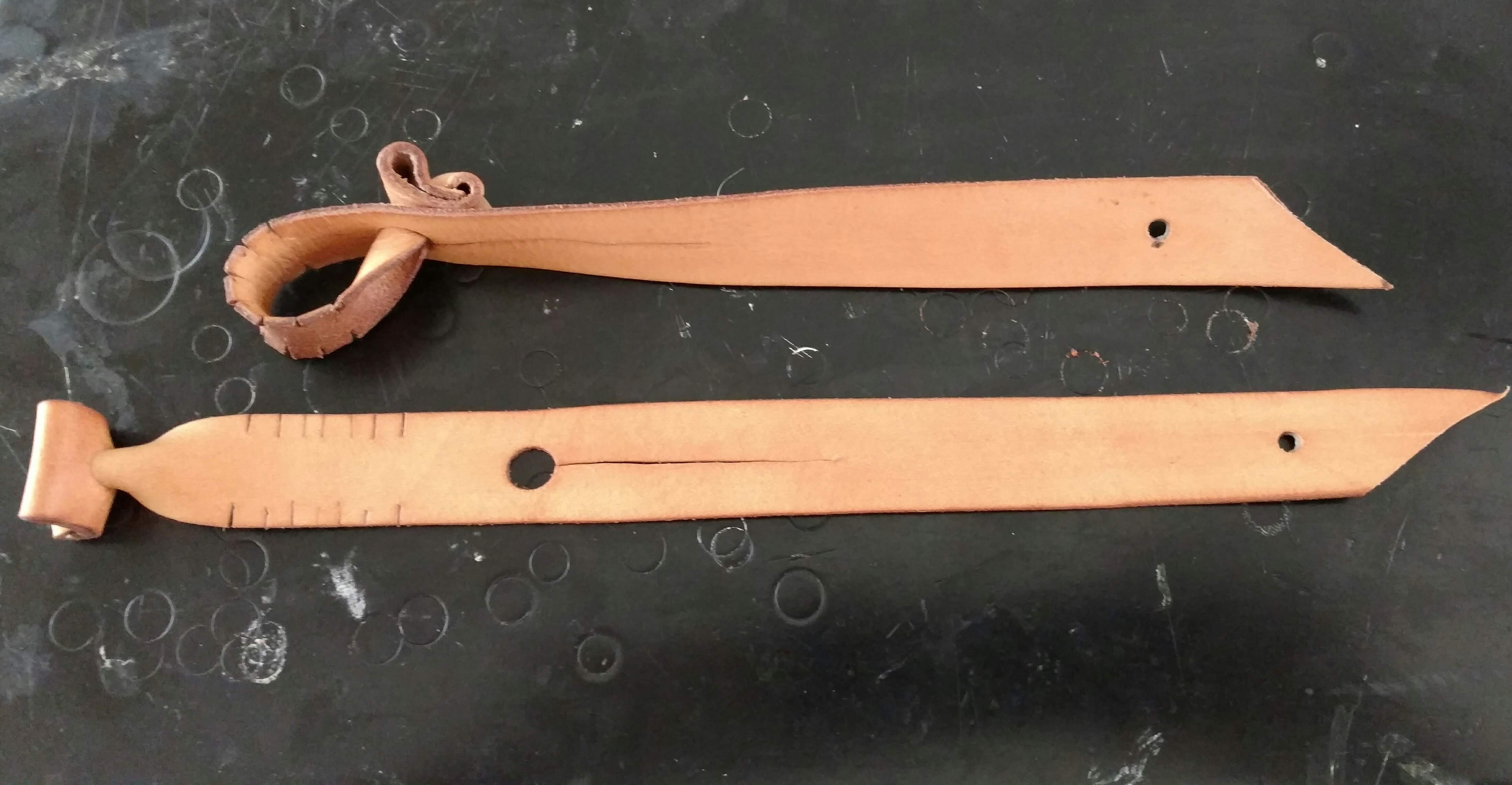
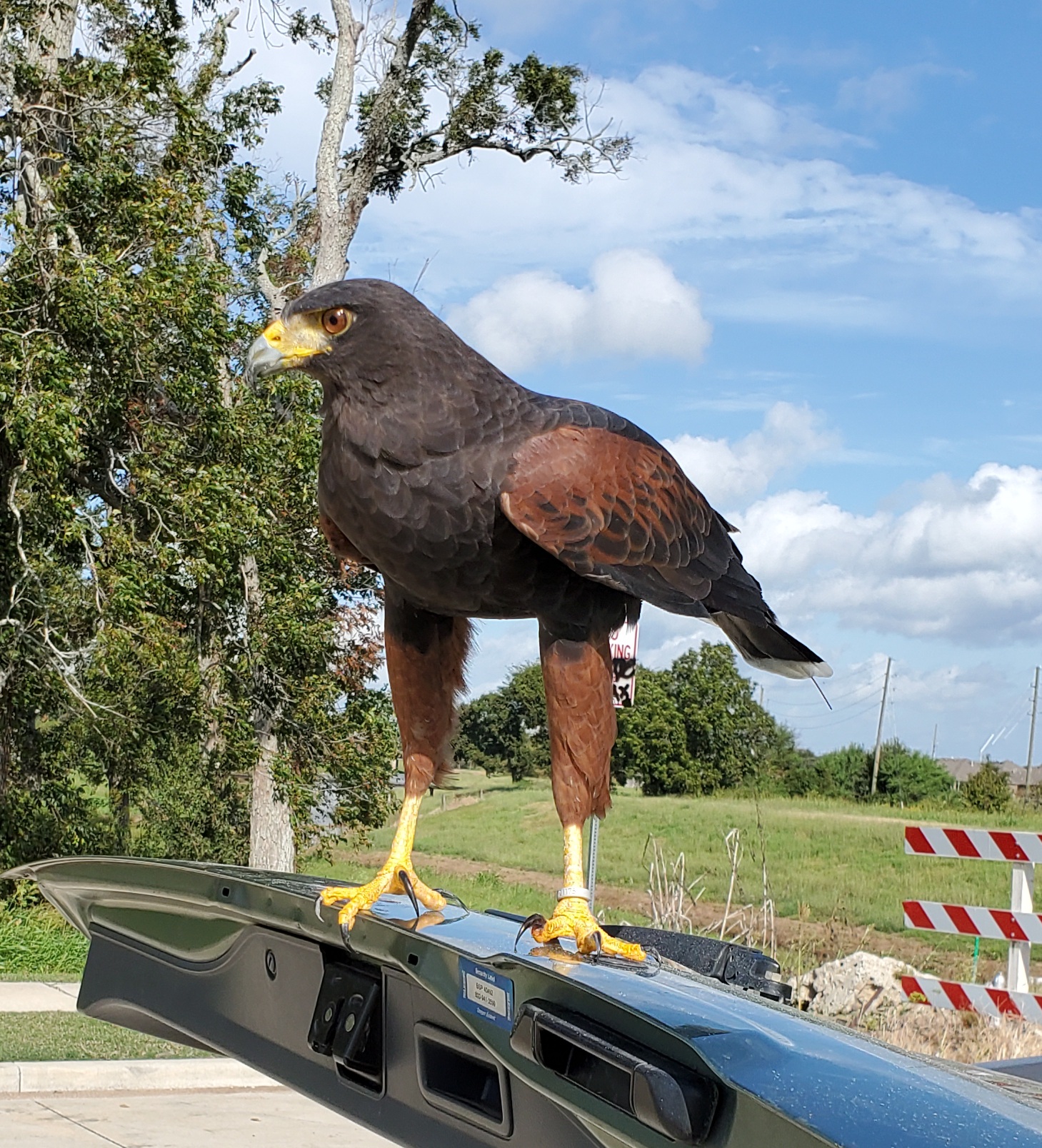
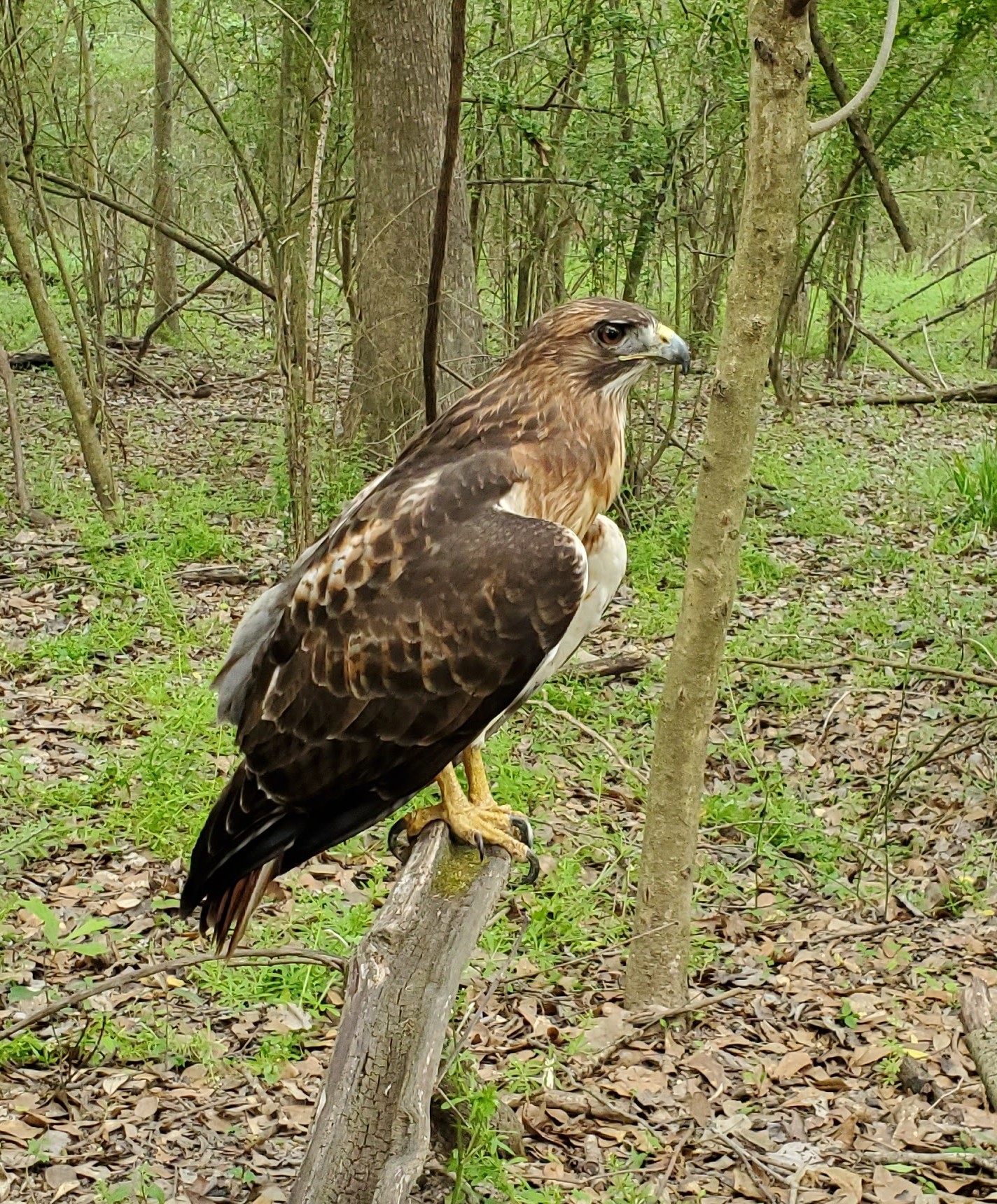
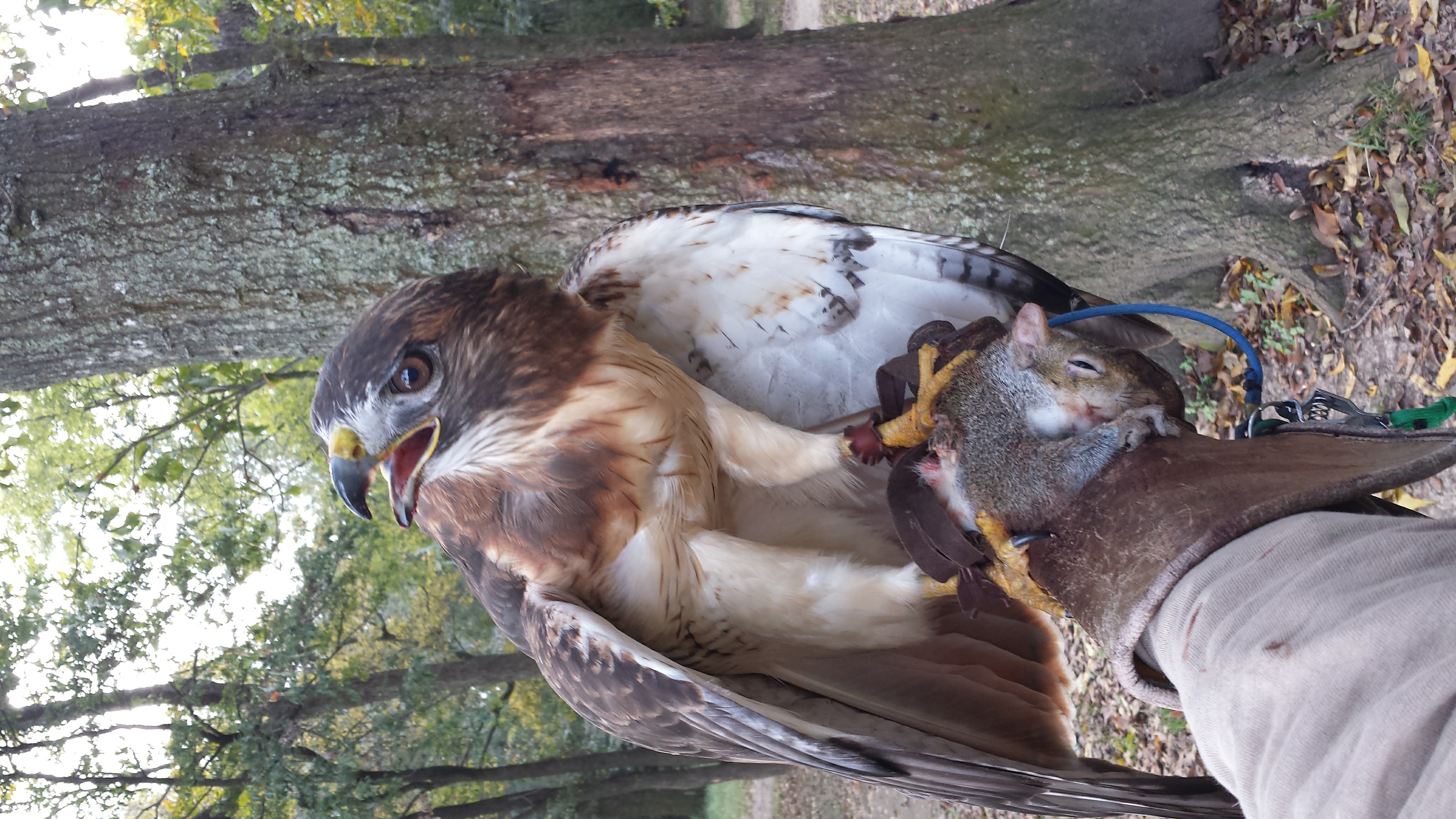
Jesslets in action........
Original article. I left it here in case you wanted to make snap anklets
Use the pattern shown and use 1/2 inch diameter heavy duty snaps instead of a grommet. In the drawing, the dashed line is the outline of the snap. Available at a fabric store, the snaps come with a little punch tool and very cheap little anvil, which will break in two minutes. At that point use some solid wood as the anvil. The anklets take only minutes to make, so you might make two or three pairs in different sizes. I recommend using light or medium weight kangaroo hide, oiled and well stretched, before you punch the holes. Cut out the pattern shown, or fold a 4 1/4 inch long X 1 inch wide piece of leather in half and punch the holes off the centerline. Use the dimensions shown. You want them a little on the loose side.
Click here, and print out.
anklet drawing
The off-center hole exists for extra security. If you are concerned about the snap coming open, put a very small tie wrap there. It just takes a second, and one per anklet is all you need.
By using these anklets, you can have your freshly trapped bird jessed in about a minute, without fighting with your two piece grommets, setters, getting the anklet perfectly sized, etc. You won't even need tape balls for her feet, it's so quick. She could ride home hooded, on the fist or perched. At the house you can lay out your tools, control the temperature, and work at a bench, that evening or weeks later after she's manned. The permanent anklets can then be installed much more efficiently. Even if you normally take the bird to the house to install the Alymeri anklets, this system is advantageous, as all the time constraints go away.
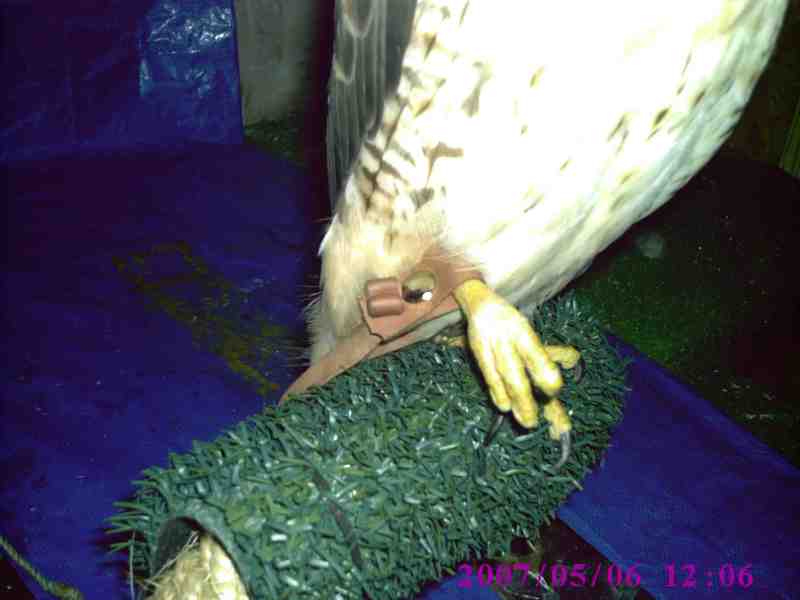
This site is © Copyright Charles Redding 2021, All Rights Reserved
Website templates
|

